FABACADEMY
Composites
Welcome to my week 17
COMPOSITES
Learning Outcomes:
Getting started with Composites
In Composites there are so many types of process.
So here are some types of process:-
1. Open Molding.
2. Closed Molding.
3. Cast Polymers Molding
Brief
1. Open Molding.
In open molding, raw materials (resins and fiber reinforcements) are exposed to air as they cure or harden. Open molding utilizes different processes, including hand lay-up, spray-up, casting, and filament winding.
2. Closed Molding.
In closed-molding, raw materials (fibers and resin) cure inside a two-sided mold or within a vacuum bag (shut off from air). Closed-molding processes are usually automated and require special equipment, so they’re mainly used in large plants that produce huge volumes of material—up to 500,000 parts a year.
3. Cast Polymers Molding.
Cast polymers are unique in the composites industry: they typically don’t have fiber reinforcement and are designed to meet specific strength requirements of an application. Cast polymer molding is used to produce parts of any shape or size..
Material can use for composites and why?
1. Resins.
The primary functions of the resin are to transfer stress between the reinforcing fibers, act as a glue to hold the fibers together, and protect the fibers from mechanical and environmental damage. Resins used in reinforced polymer composites are either thermoplastic or thermoset.
2. Reinforcements.
The mechanical properties of FRP composites are dependent on the type, amount, and orientation of fiber that is selected for a particular service. Fiber reinforcements carry load along the length of the fiber to provide strength and stiffness in one direction.
3. Additives & Fillers.
Additives are used in composites to modify materials’ properties and tailor the laminate’s performance. When added to the resin, fillers can improve properties including water resistance, weathering, surface smoothness, stiffness, dimensional stability and temperature resistance.
4. Core
Core materials are used extensively throughout the composites industry to fabricate stiff and yet lightweight composites products. Core material is “sandwiched” between fiber reinforced laminate skins to significantly increase stiffness and flexural strength while reducing warpage of flat surfaces.
5. Surface Finishes.
Surface finishes are mainly used for UV protection, corrosion resistance and aesthetics. They can be molded in process or secondarily applied coatings and support the long term appearance of composite products.
You can go through this website for more details
lets start composite.
I was little confused about composites and i dont know what to do as assinment so after a long discussion with my instructor mr. puneeth raj so his gave me an idea is to make a fender on the tyre for my final project
So I have designed for that.
Positive.
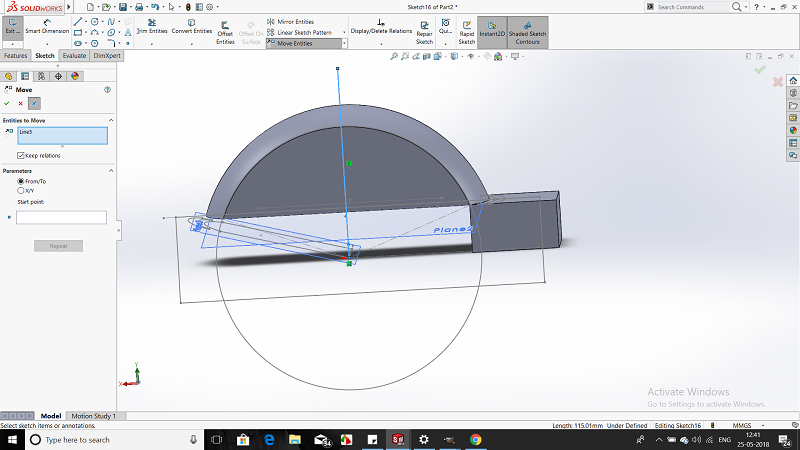
Negative.
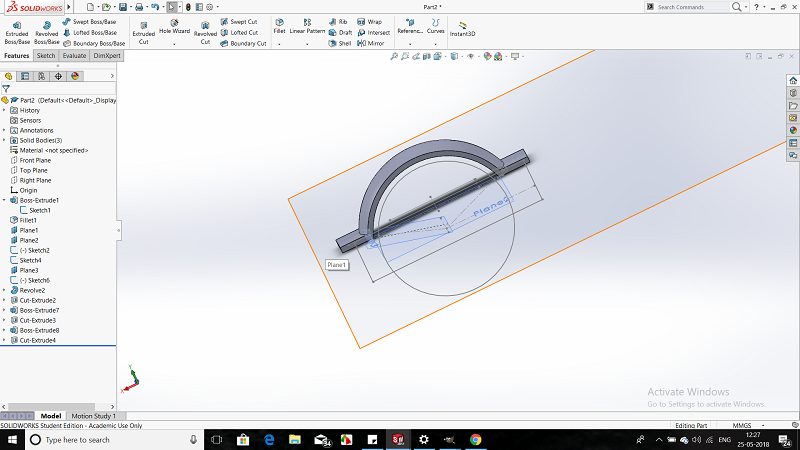 Download the design files
Download the design files
After my design is complected I saved this positive and negative files in .stl formate and imported in aspire software and and millied in CNC machine.
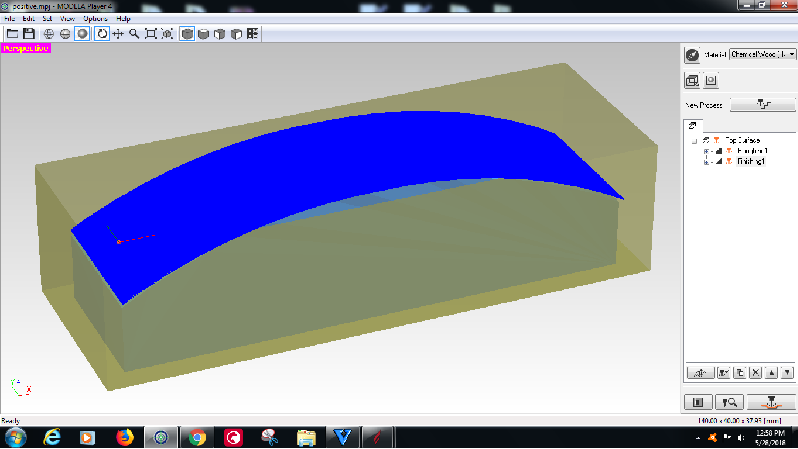
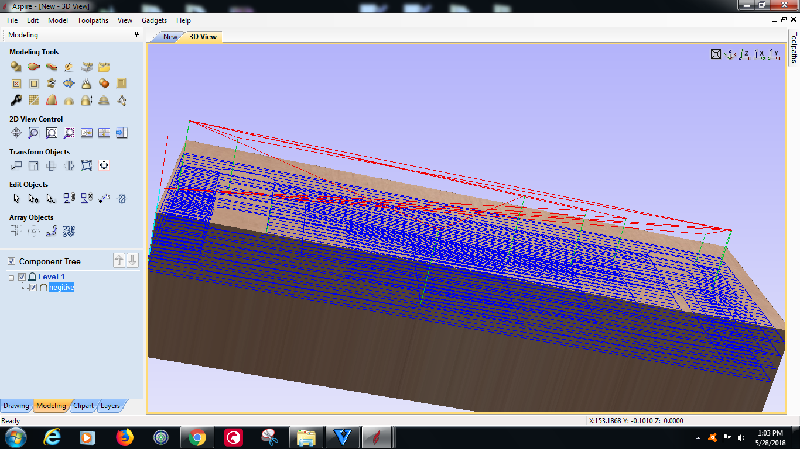 Download the design files
Download the design files
So after creating tool path I save in .cnc formate.
And started milling in CNC
There is a problem with the material so I got only one piece of wood so I tried to finish I that piece.
It took a lot of time because I have to mill Positive (Roughing & Finishing) and Negative (Roughing & Finishing).
Roughing.

Finishing.
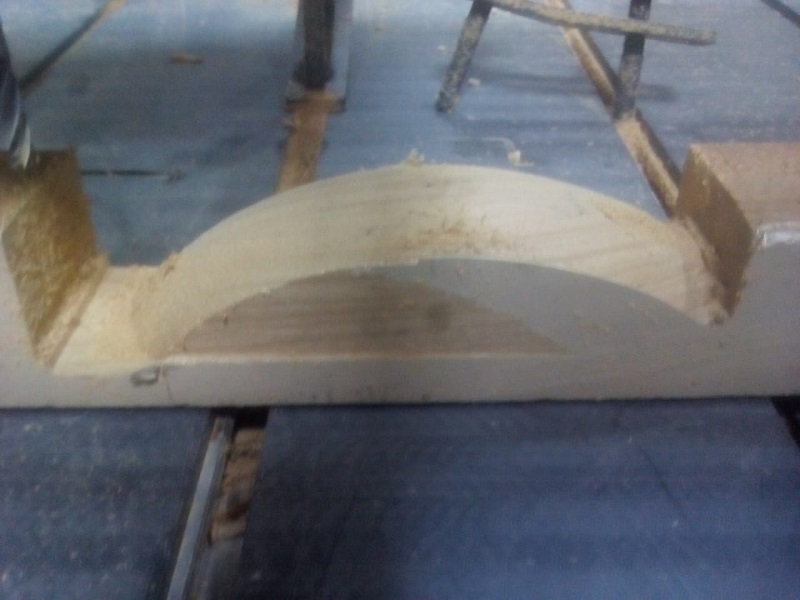
Roughing.
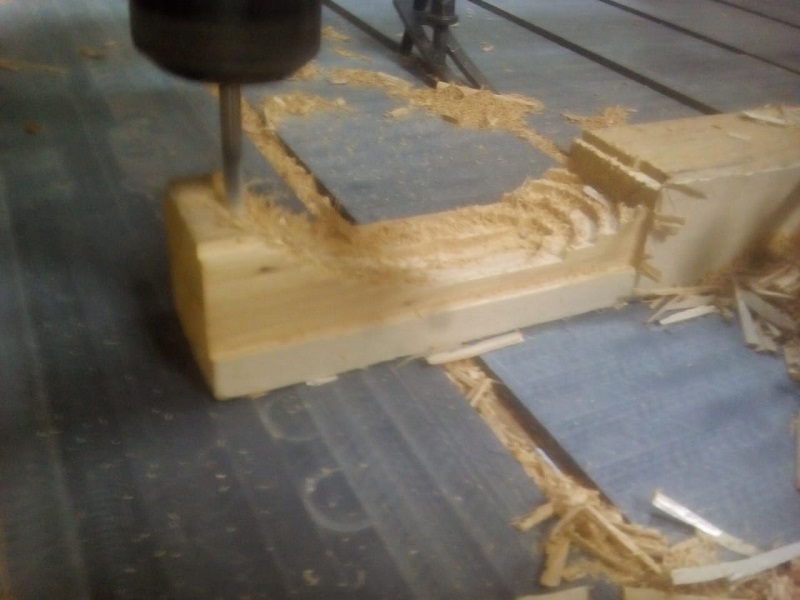
Finishing.
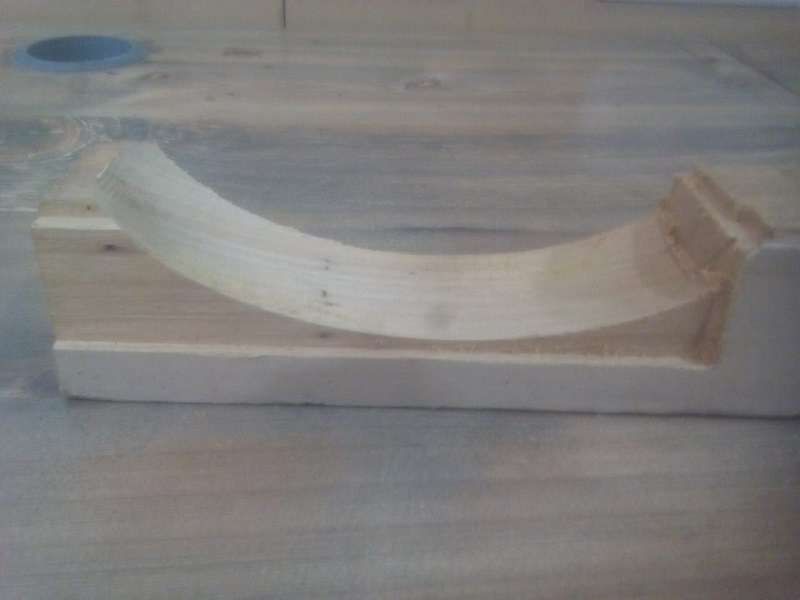
Finnaly it looks like this so in between that i will make composites (Compression Molding)
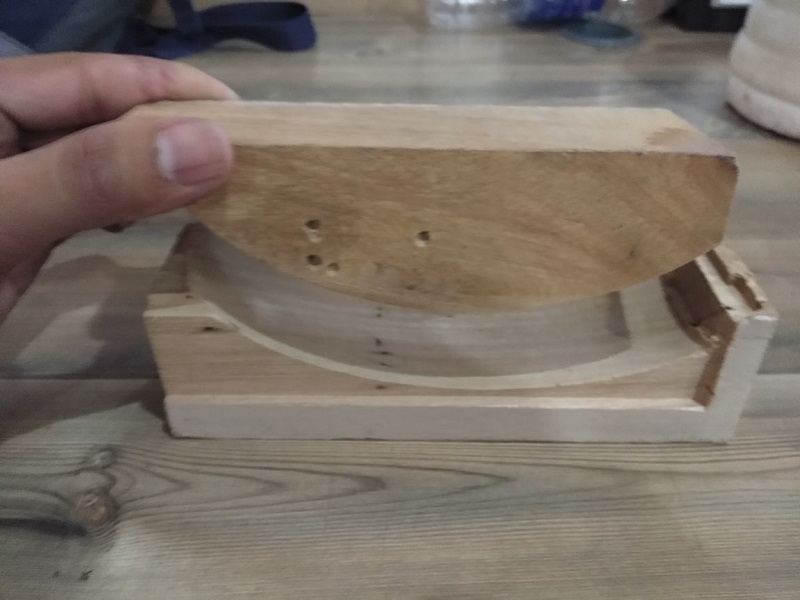
lets start composites.
Im going to do Compression Molding.
Compression molding is a manufacturing process in which composite materials are sandwiched between two matching molds under intense pressure and heat (from 250° to 400° F) until the part cures.
This technique is used to rapidly cure large quantities of complex fiberglass-reinforced polymer parts. Compression molding features fast molding cycles and high part uniformity.
The process can be automated. In addition, labor costs are low and it provides design flexibility and nice surface finishes.
But im not using any complex fiberglass-reinforced polymer. I was using only fevicol, wood shavings & cloth. And I have used natural sun light.
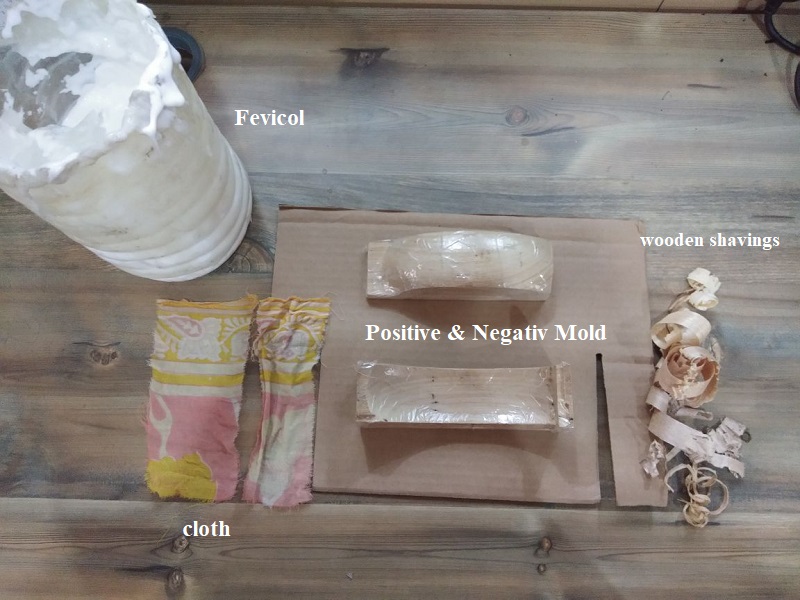
I gathered all the material.
Before that I sticked tape on positive and negetive because if you wont stick the tape the fevicol will stick to the wood.
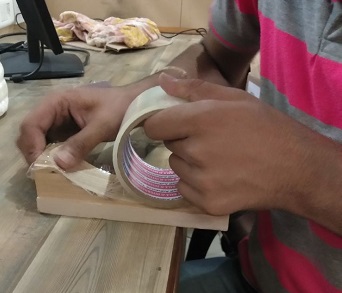
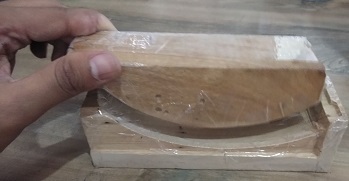
After taping I have done the layering of the cloth and wood shavings with fevicol
Layers :-
cloth
Wood shavings (4 Alternate Vertical)
wood shavings (4 cross layering)
wood shavings (4 Alternate Horizontal)
cloth
Photos given below .................
Horizontal wood shaving
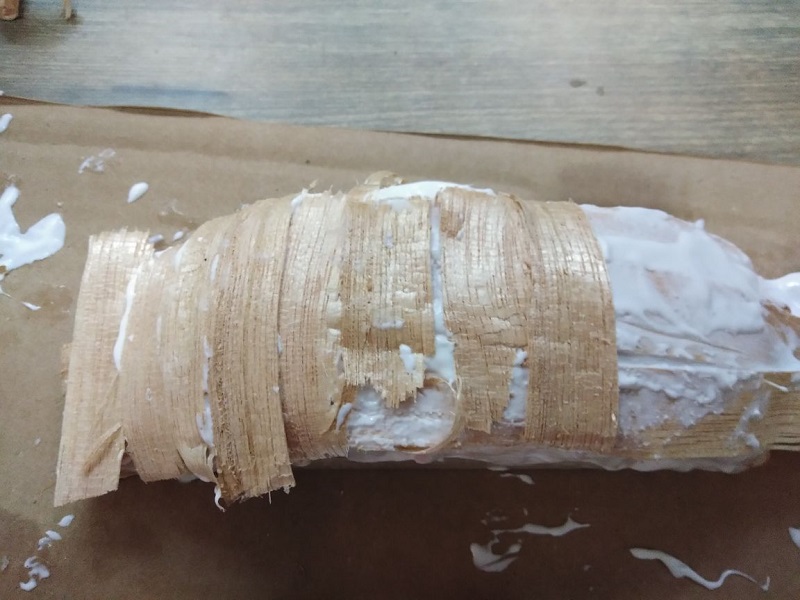
Vertical wood shavings
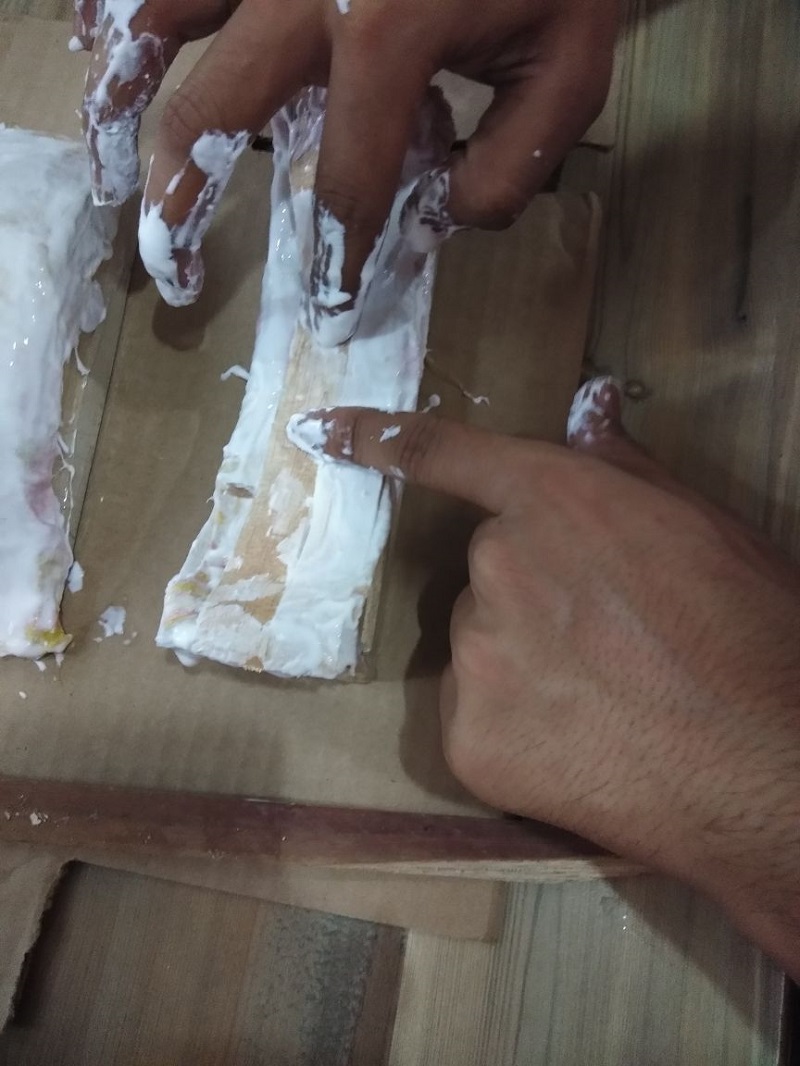
Pressbothlayers
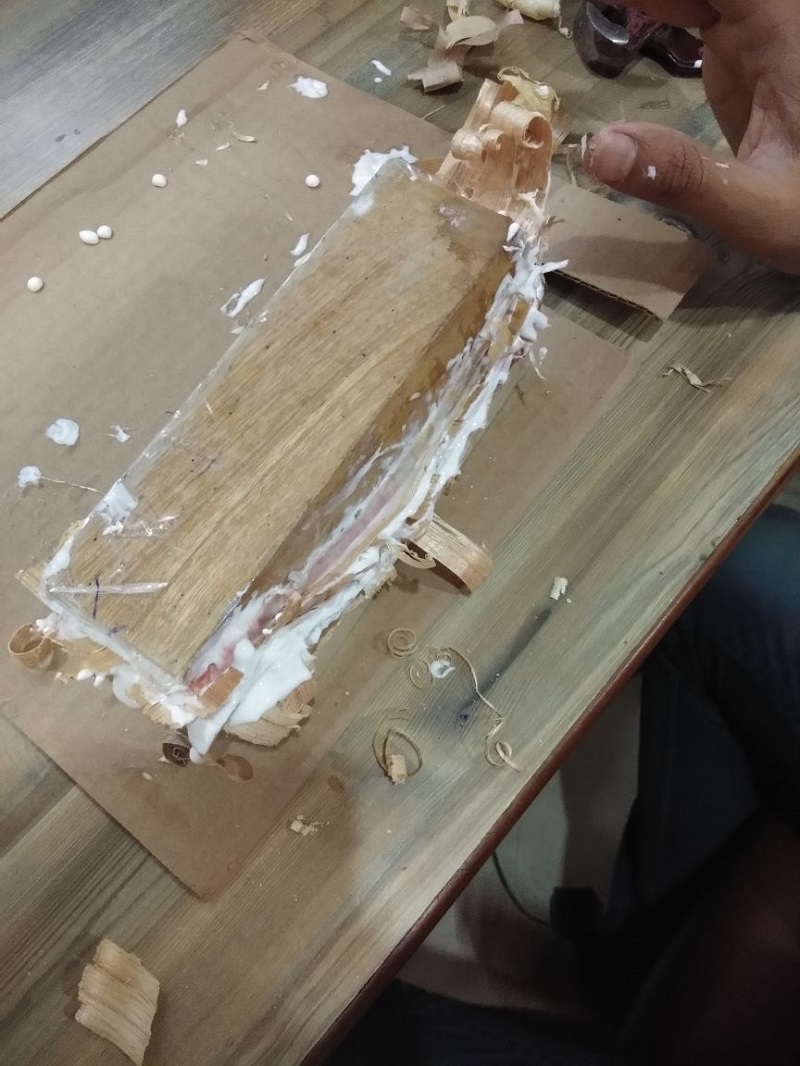
Weight on mold
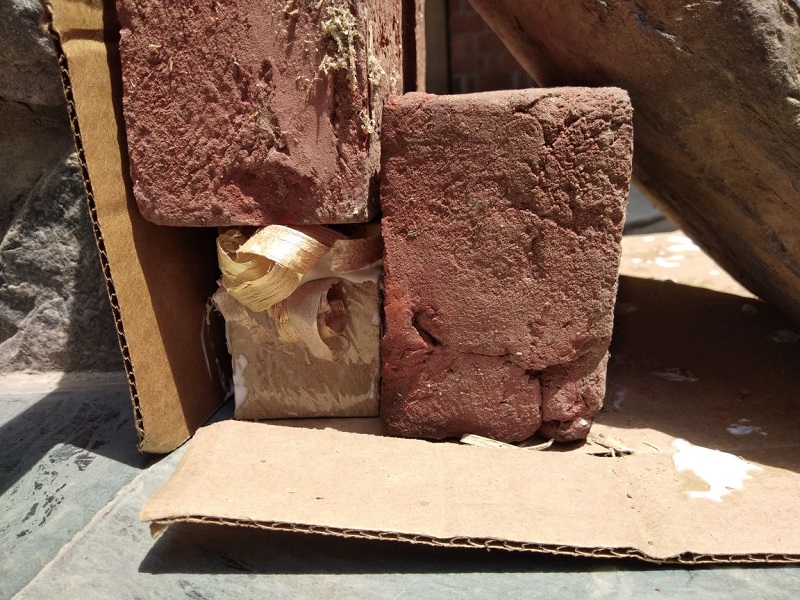
If possible were gloves. I have kept for some time in sunlight
After along time it took around 30 hours to dry.

In Composites there are so many types of process.
So here are some types of process:-
1. Open Molding.
2. Closed Molding.
3. Cast Polymers Molding
Brief
1. Open Molding.
In open molding, raw materials (resins and fiber reinforcements) are exposed to air as they cure or harden. Open molding utilizes different processes, including hand lay-up, spray-up, casting, and filament winding.
2. Closed Molding.
In closed-molding, raw materials (fibers and resin) cure inside a two-sided mold or within a vacuum bag (shut off from air). Closed-molding processes are usually automated and require special equipment, so they’re mainly used in large plants that produce huge volumes of material—up to 500,000 parts a year.
3. Cast Polymers Molding.
Cast polymers are unique in the composites industry: they typically don’t have fiber reinforcement and are designed to meet specific strength requirements of an application. Cast polymer molding is used to produce parts of any shape or size..
Material can use for composites and why?
1. Resins.
The primary functions of the resin are to transfer stress between the reinforcing fibers, act as a glue to hold the fibers together, and protect the fibers from mechanical and environmental damage. Resins used in reinforced polymer composites are either thermoplastic or thermoset.
2. Reinforcements.
The mechanical properties of FRP composites are dependent on the type, amount, and orientation of fiber that is selected for a particular service. Fiber reinforcements carry load along the length of the fiber to provide strength and stiffness in one direction.
3. Additives & Fillers.
Additives are used in composites to modify materials’ properties and tailor the laminate’s performance. When added to the resin, fillers can improve properties including water resistance, weathering, surface smoothness, stiffness, dimensional stability and temperature resistance.
4. Core
Core materials are used extensively throughout the composites industry to fabricate stiff and yet lightweight composites products. Core material is “sandwiched” between fiber reinforced laminate skins to significantly increase stiffness and flexural strength while reducing warpage of flat surfaces.
5. Surface Finishes.
Surface finishes are mainly used for UV protection, corrosion resistance and aesthetics. They can be molded in process or secondarily applied coatings and support the long term appearance of composite products.
You can go through this website for more detailslets start composite.
I was little confused about composites and i dont know what to do as assinment so after a long discussion with my instructor mr. puneeth raj so his gave me an idea is to make a fender on the tyre for my final project
So I have designed for that.
Positive.

Negative.
 Download the design files
Download the design files
After my design is complected I saved this positive and negative files in .stl formate and imported in aspire software and and millied in CNC machine.

 Download the design files
Download the design files
So after creating tool path I save in .cnc formate.
And started milling in CNC
There is a problem with the material so I got only one piece of wood so I tried to finish I that piece.
It took a lot of time because I have to mill Positive (Roughing & Finishing) and Negative (Roughing & Finishing).
Roughing.

Finishing.

Roughing.

Finishing.

Finnaly it looks like this so in between that i will make composites (Compression Molding)

lets start composites.
Im going to do Compression Molding.
Compression molding is a manufacturing process in which composite materials are sandwiched between two matching molds under intense pressure and heat (from 250° to 400° F) until the part cures. This technique is used to rapidly cure large quantities of complex fiberglass-reinforced polymer parts. Compression molding features fast molding cycles and high part uniformity. The process can be automated. In addition, labor costs are low and it provides design flexibility and nice surface finishes.
But im not using any complex fiberglass-reinforced polymer. I was using only fevicol, wood shavings & cloth. And I have used natural sun light.

I gathered all the material.
Before that I sticked tape on positive and negetive because if you wont stick the tape the fevicol will stick to the wood.


After taping I have done the layering of the cloth and wood shavings with fevicol
Layers :-
Photos given below .................
Horizontal wood shaving

Vertical wood shavings

Pressbothlayers

Weight on mold

If possible were gloves. I have kept for some time in sunlight
After along time it took around 30 hours to dry.
